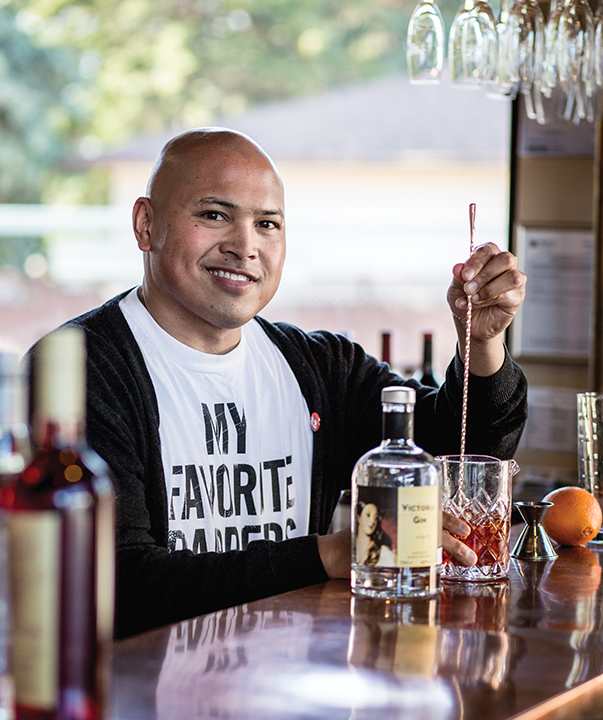“There should be three things you want to have in a cocktail: You want to have your base spirit – so your whiskey, gin or bourbon – a sweet aspect and a bitter aspect. Then you have to find a balance of the three.
“Chill the glass first to prepare the vessel you’re going to be drinking out of so it’s cold. Make sure there’s ice in whatever you’re shaking it in, and that you’re pouring over ice all the time. It’s the same with stirring. A steadfast rule is that drinks that have bases [like bourbon or whiskey], you stir, and for drinks that use fruit juices, you shake.
“Shaking has two purposes: To cool the drink and to add foam. Foam creates an airiness to the drink, making it lighter and easier to drink. If you’re adding fruit juice, it also creates a nice, refreshing aspect. When you notice the shaker getting frosty on the outside, you know the drink is ready. And if you’re stirring [a drink] , about 30 stirs is adequate.”In my experiments at home, there are two ways you can fix [a recipe gone wrong] . One way is with acidity. Lemon is used for harsher acidity, lime, for not so much, and orange for a sweeter acidity. If a drink is too harsh or too sweet, you can add lemon to balance it out. The other is with carbonation.
“When you think of any singer, they always love the old stuff before they progress. It’s the same thing with cocktails. I see novice bartenders trying to be too innovative. People have been drinking cocktails since the 1800s, so there are tried-and-true recipes you just can’t beat. Learn the basics first; go to steadfast recipes before going to something new, and use the best ingredients you have available to you. Learn how to make a good Sidecar or Manhattan first before you mess around with being creative.
“I wouldn’t suggest a bartending school to anybody. I guess they give you the basics, but they won’t make you the best. The best way you’re going to learn anything is to do it. There are so many books out there, and in the age of YouTube, you can learn to do anything.”
Like this content? Get more delivered right to your inbox with Ed. Eats
A list of what’s delicious, delectable and delightful.
